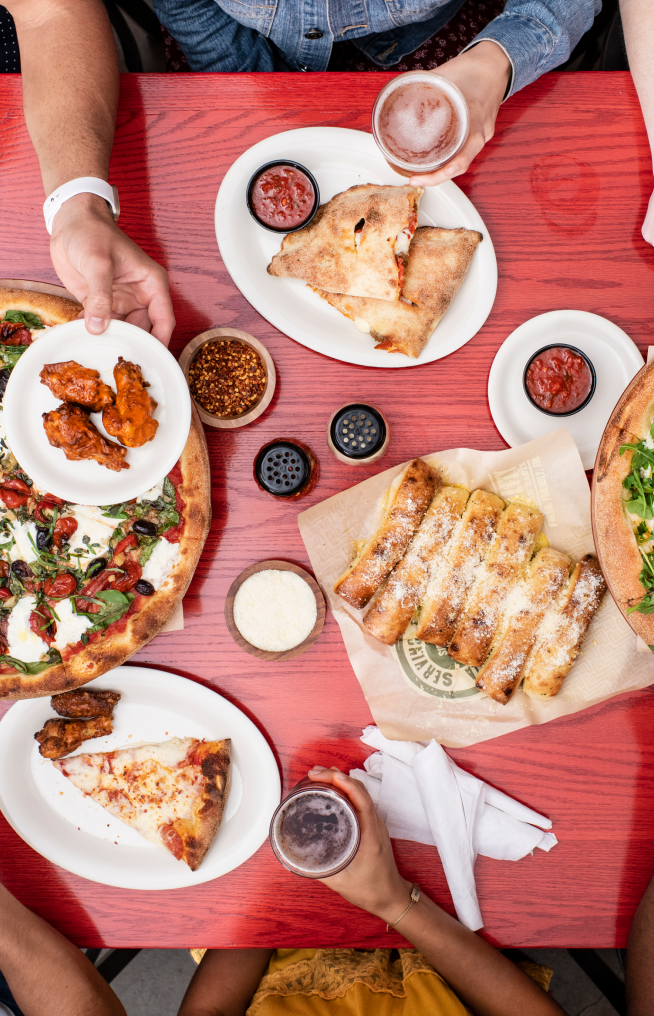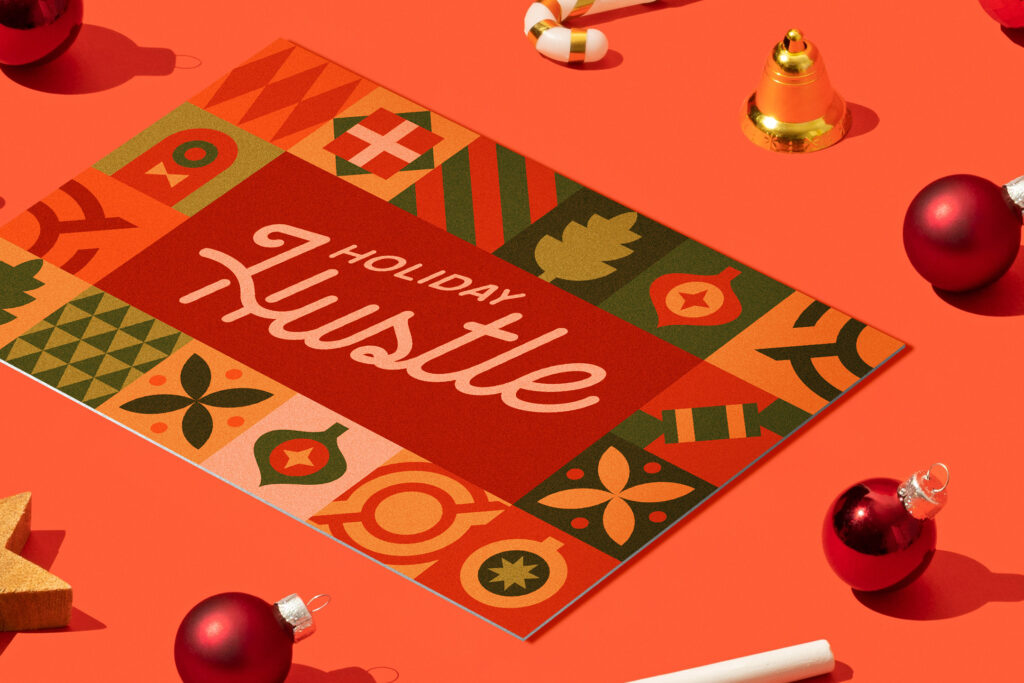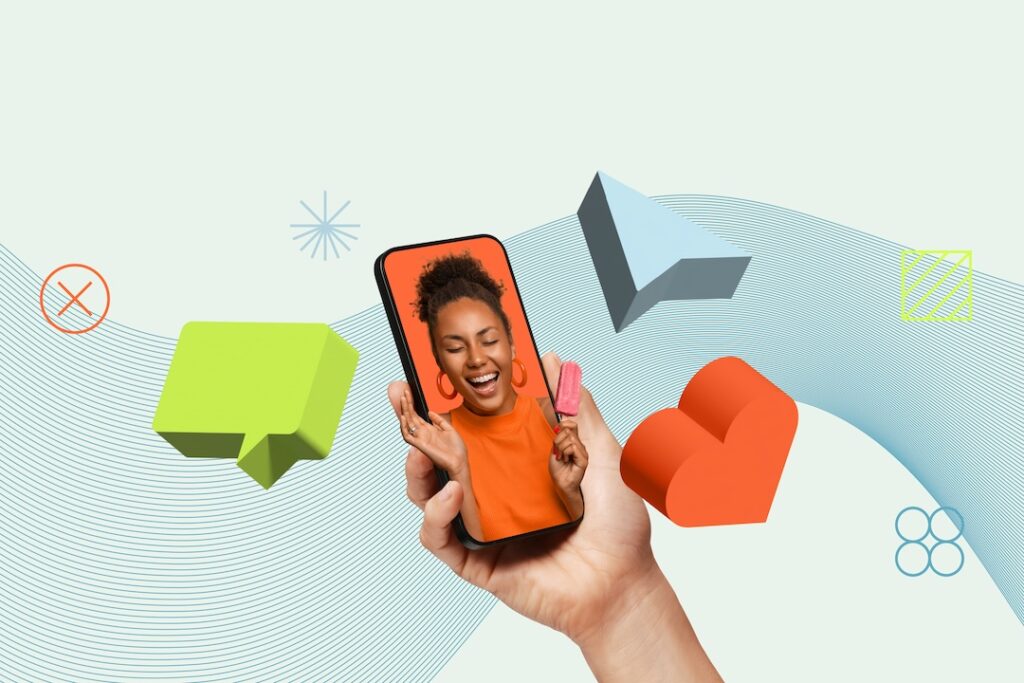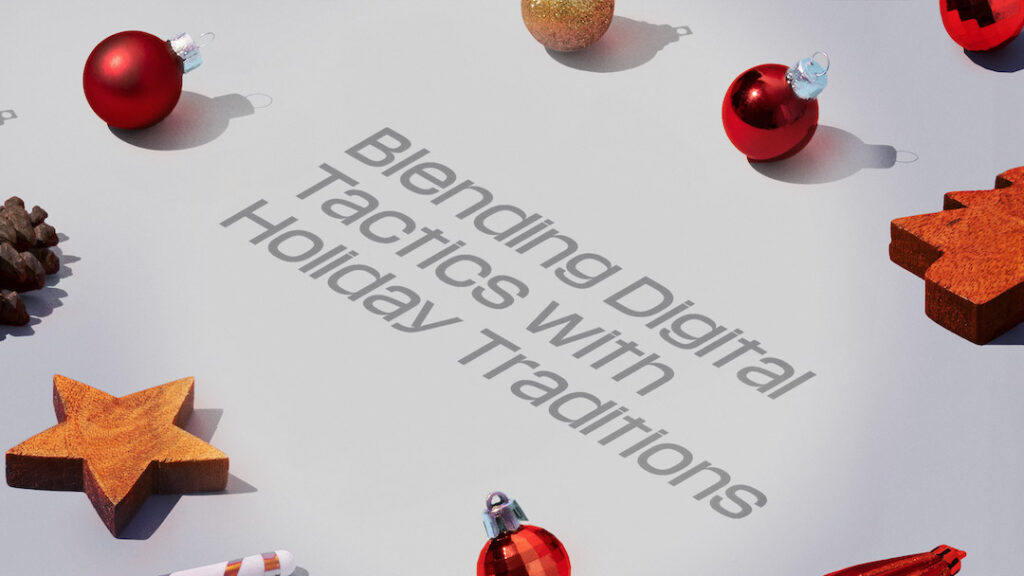A Guide to Earning Brand Loyalty
This Valentine’s Day, while we participate in one of the best marketing campaigns in American history, consider your brand love life. Whether it’s human to human or customer to brand, the patterns of developing a meaningful relationship are the same.
This article is not about 5 things you can learn from Coca-Cola, or how to imitate Apple’s end-to-end strategies. But it is about finding gaps in your brand and marketing strategy. By thinking about our strategies through the lens of a personal relationship, as opposed to short term tactics, we can unlock higher levels of loyalty. We all want to be the next Nike… it just takes a little sweat equity to earn the love.
And yes, we’re going to continue the love metaphors throughout 😉
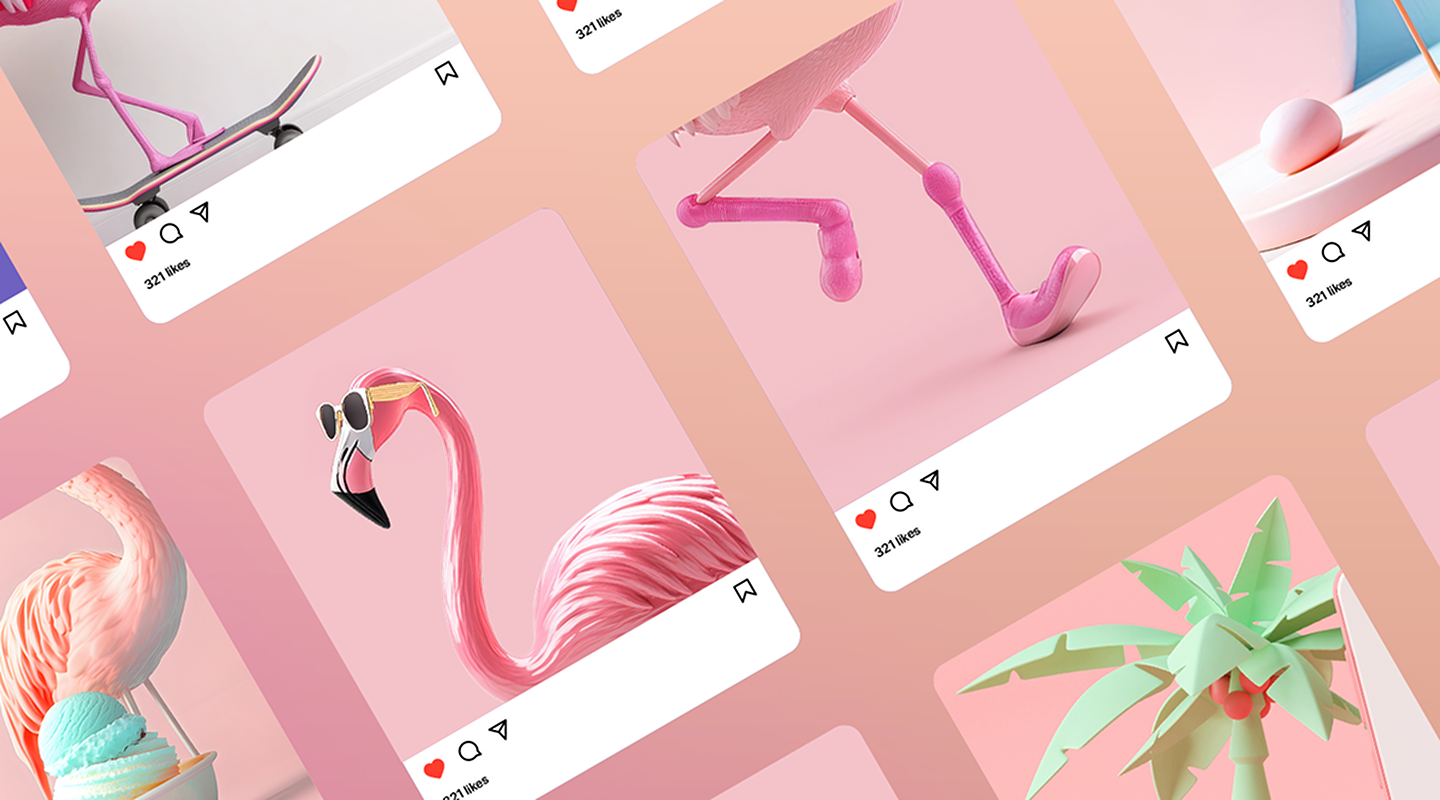
Step 1. Make a good first impression.
In today’s Age of Scroll, where countless brands compete for our attention, making a memorable first impression is paramount. Just as you wouldn’t approach someone with a generic pickup line, your brand needs to stand out from the crowd and pique the interest of your target audience.
My favorite way to approach this is through Rory Sutherland’s “Why Bother” principle. He argues that brands need to give customers a compelling reason to pay attention, to disrupt their indifference and make them curious. Anyone can explain the why with logic, facts and figures, but no one falls in love with a spreadsheet. However, the why bother is the opportunity for marketing magic. Why does a mint at the end of a meal, or a handwritten thank you note give us greater emotional value? One could argue straightforward pricing and direct communication might be more practical, yet the difference is tantamount to telling someone you love them versus showing it. The difference is palpable.
Think about the brands you love – they likely evoke a feeling, tell a story, or offer something unique that sets them apart. What made you select your laptop bag? It likely wasn’t the primary feature of having a laptop-sized pocket or being durable. Those are table stakes. Yet each of us likely made a selection based on knowing the bag you attend meetings with—or used to—is a part of the professional impression you leave behind. I saw a single ad for a Baboon to the Moon bag, highlighting its bold color combos and surprise interior lining: a neon pattern of a monkey riding a triceratops. In that one arresting image I resonated with an idea I had never voiced to myself: that there’s more inside. That image was their pick up line.
Craft campaigns around your ideal first impression.
To make a good first and lasting impression, your brand needs to cut through the noise and resonate with your target audience on an emotional level. Here are five strategies we use to achieve this:
- Embrace the Unexpected. What would be the irrational approach for your industry? As Marty Neumeier says, “when everyone else Zigs, Zag.”. TikTok and GenZ gave credence to “weird” art and brain rot. Push and test your designs on social first, then roll out to traditional. Always push further than last time. Your core audience will help you center your brand.
- Tap into Emotions. Use the levers of target audience, feature, benefit, or location to create a heuristic grid. Select one of those levers to be your y-axis, and write joy, nostalgia, jealousy, fear, and other emotions across your x-axis. The grid boxes become prompts for new messaging. And as we know, social best practices require dozens of headlines to test. This also works for building out a content framework if you swap out the emotions for campaign phases and milestones.
- Test something new. There’s a good chance that one ad execution our client or boss’ loved is not going to work for everyone. So while the kudos keep the coffers full, writing and designing around a testing strategy is crucial. Demonstrate an open mind, and let the numbers do the talking.
- Expand your offering. This doesn’t have to be a completely new solution to a new problem. Create new color ways, add a dark mode, include a guarantee, offer a new subscription tier, develop a founders or BTS channel. In the right context, the new thing is the perfect pickup line.
- Conduct a small ABM campaign. Just as unexpected gestures can strengthen a relationship, brands that surprise and delight their customers can create memorable experiences that foster loyalty. This could involve sending personalized gifts, offering exclusive deals, or creating unexpected and delightful experiences. The ultimate format of this, with ultimate impact, is Account Based Marketing. The key is attaching your brand to something they already value.

Step 2. Find common ground.
Once you’ve captured someone’s attention, the relationship needs a reason to stay in conversation. We’re looking for common ground, shared headspace. These become the magnets of the relationship. Shared values and interests keep both sides engaged with ease. These are the brand pillars, the product interests, the aesthetic preferences, what you stand for. Above all, it’s a clear value prop that moves customers from initial attraction to a knowing trust and expectation. And while meeting those expectations becomes our brand promise, it all stems from knowing and being yourself. And I would argue that from a customer perspective, the confidence and methods in which we assert who we are is the measure of a brand.
Gary Vaynerchuk says attention is the modern currency. We only have so much time before a competitor or distraction walks by and our prospect is gone forever. To keep our connection growing, we introduce our differentiators and values with clarity, allowing the customer to drive and vet us further. This is brand positioning, and it’s not just about distinguishing yourself from your competitors from a market share perspective. It’s about your customers’ ability to easily recognize your value to them. That’s the alignment. You both care about a particular problem, and your service helps them solve it. You both prioritize a cultural value, and your product demonstrates a commitment to it.
In workshops, I like to start with exercises around company values. The reason Patagonia has so many avid fans is because they put their values ahead of their profits. What better way to show what you stand for? In Patagonia’s case, their yearly Black Friday “sale” suggests people repair what they own instead of buying new, doubling down on their belief in recycling. As Chris Voss says, “your core values are still doing what you would do, even if it costs you.” That level of authenticity is magnetic, and won’t soon be forgotten.
Build your brand around shared values, and communicate them with clarity.
Give your prospects confidence that you are worth their time. Brands do this by offering easy to navigate websites, a consistent voice, aesthetics that connect to your audience’s preferences, and of course, communicating shared values. Here are four exercises we use with our clients:
- Create an Onliness statement. Marty Neumeier emphasizes the importance of radical differentiation. In “Zag”, he distills a positioning technique he calls the Onliness statement which we use frequently in workshops. It defines a company through their category, differentiators, customer set, geography, need state, and cultural trends, all in one run on sentence. It’s not a customer-facing message yet, but a valuable first step to approaching and owning what makes your brand different. Once completed, it becomes a good indicator if your values are in alignment with the business.
- Define your Golden Circle. Simon Sinek, author of “Start with Why,” adds another layer to this conversation by emphasizing the importance of purpose-driven branding. He argues that people don’t buy what you do, they buy why you do it. This means clearly articulating your brand’s mission and values, inspiring customers to connect with you on a deeper level. His Golden Circle exercise takes 5 minutes and prompts deep conversations.
- Build out a brand archetype. Think of Joseph Campbell and Star Wars, bringing archetypes into the forefront of storytelling. If you align your brand with an archetype, you’re giving viewers a shortcut to understanding who you are and where you have shared motivations and values. Grab an archetype deck from your favorite marketing vendor and give it a try. You’ll find it also provides creative voice constraints that can be reassuring during periods of fast-paced decision making.
- Use the WIIFM framework. As Donald Miller reminds us, we can’t all promote world love like Coke and expect to stand out. That took a century of careful positioning. But aligning to a simple, “what’s in it for me” WIIFM framework will resonate. His Brand Story framework is centered around the customers being the hero, choosing your product or service to help them overcome their problems and reach their aspirations.
Step 3. Keep dating fun.
OK, so we’ve gotten their attention and gone on a couple dates. But earning a follow or a purchase doesn’t make this a steady relationship. If we can’t keep their attention and entice our customers—dare I say, seduce them—then steps 1 + 2 are tantamount to a one night stand. So let’s keep up the excitement. Stay in their DMs SMS, inbox, channels, and vision.
Seth Godin emphasizes the importance of building trust with a small, dedicated audience rather than chasing mass appeal. He argues that the most successful brands focus on creating content that serves a specific niche and fosters genuine connections. The marketing funnel, therefore, is the place where we see this in real time. We pour attention into the top, and as prospects funnel down through different touch points and messages, many leak out. But we continue serving consistent and engaging content until we have what’s left at the bottom: loyal customers and advocates. This is the core of your tribe. These are the people willing to go steady.
Our job is to keep opportunities on the table, always inviting them to the next mutually enjoyable moment. It’s easy to draw them down a funnel when the desire is coming from both sides—which is why getting steps 1 + 2 are so important. Customers are primed when they can easily recall past positive experiences. And while it’s possible to do this with direct mail and other mediums, we recommend a standard, easy to test and tweak, digital funnel strategy. Don’t reinvent the wheel when it comes to best practices here. Leave your experimentation to the creative team, and let these platforms do the work for you. Then build in ample time to replace poor performing content with variations and insights of what does perform. The key here is insights, and why this technique of approaching leadgen through the lens of personal relationships can be beneficial. The best brands work with more than analytics. Step 4 brings feedback loops and qualitative data into the mix, which will benefit your writers and designers and social team when creating funnel content.
Reward your customers in each step of the funnel.
If your customers receive something of value, whether it’s information, a download, entertainment or a laugh, they’ll be willing to follow your channel. They’ll subscribe to your newsletter. They’ll self-select themselves into converting. The following are four tips to keep in mind when developing your next funnel campaign:
- Good content nurtures. Funnels can be more than a decision tree for prospects. Knocking at the door until someone enters is annoying. Offering consistently engaging content is an invitation. Seth Godin talks about “permission marketing” as an approach to earning the right to tell your story to an audience that has opted in and is receptive to your message. By consistently delivering valuable content and building trust with a core group of “true fans,” brands can cultivate passionate advocates who will organically spread the word and attract new customers.
- Connect CTAs to context. Don’t surprise your viewers once you’ve earned their attention. Use dynamic headlines and content that ensures a clear path from ad to landing page to conversion. A bait-and-switch, intentional or not, is a double hit against your brand. It’s worth the extra time to setup.
- Consider analog. Flip the script with your funnel. Insert an analog moment. Or vice-versa. Push your customers and prospects to experience you in a new way. I mentioned ABM campaigns in Step 1. When done well they can have very high success rates with the benefit of a very short funnel.
- Calculate LTV and invest in content. Don’t forget, the most valuable metric you can generate from funnel math is the lifetime value of your customer. An investment in better content creates a higher LTV, as demonstrated by Kevin Lane Keller and his Customer-Based Brand Equity model. It’s a deep dive and really heady, but worth it.

Step 4. Prove you’re listening.
We did it. We’ve got the steady relationship. No more swiping right. We’re committed. Married Subscribed. But as we know, our healthiest relationships are fed by attention. When we stop giving it, they wither away. While marketing is the same when it comes to sustaining and growing individual advocates of your brand, this section expands this notion to tribe building: helping your relationships find a bigger sense of belonging by being attached to you.
Tribe building is the long game for brands. For those I’ve mentioned thus far—Coke, Apple, Nike, Patagonia—it’s a primary strategy. It’s about taking those individual connections and weaving them into a vibrant community. A collective of individuals who have defined a shared aesthetic taste, political leaning, social responsibility, or community values. The brand becomes intertwined with the aspirational lifestyle of the individual. This may sound like a fantasy, but I assure you, if you don’t aim for a cultivating a tribe you’ll never have one.
But we’re in luck! It’s never been easier to initiate a tribe and reap the benefits of instantaneous engagement. Obviously, I’m talking about social media. Think of it as a dance of communication – listening to your customers’ needs, responding to their feedback, and adapting your brand strategy accordingly. By creating a continuous feedback loop, you can ensure that your brand stays relevant, engaging, and aligned with your tribe’s evolving desires. It also provides potential customers an opportunity to opt into your funnel or vet you from afar. A sense of belonging fosters deeper loyalty, leading to repeat purchases, higher customer lifetime value, and greater resilience to competitive pressures. Tribes also provide a buffer against negative feedback or crises. When challenges arise, your tribe will rally around you, offering support and mitigating potential damage. Above all, they provide constant feedback and insights, which informs all the previous steps.
Invest in tribe building.
To build lasting relationships, you need to create a two-way dialogue with your customers. Here are three insights we’ve learned over the years:
- Engagement is more important than a calendar. Yes, brand strategy should dictate external communication, aligning with all corporate messaging. But the heart of social is engagement. Don’t just broadcast. Participate. Ask questions, run contests and polls. Use a consistent brand voice and respond to customer concerns promptly, encouraging them to share further thoughts and feedback.
- Don’t neglect speed. If we’re in a relationship with someone and wait three days to text them back, most likely there will be unintended consequences. Track brand mentions and sentiment to understand how customers perceive you. Use social listening tools to monitor conversations and identify potential issues and opportunities.
- Negative responses are a gift. Pay attention to what your tribe is saying, both positive and negative, and use those insights to inform your brand strategy. They’re willingly sharing their pain points. So if they feel them strongly enough to be vocal, and the comments get traction, we have a new insight. Create your next creative campaign and pickup line accordingly. This could pave the way for a new product or service.
Looking for a brand love doctor?
Building a relationship takes time, and generating brand love is no exception. It’s the perennial craft of the marketer, yet often driven by subconscious consumer sentiment. So if you’d like assistance with any of the steps above, reach out. From the branding to the creative campaigns, funnel optimization and social management, we love it all.
Happy V-day from 321,
Kirk Rhodes
VP of Creative Services


